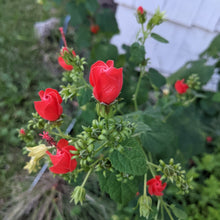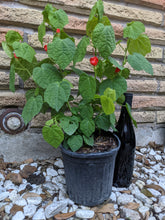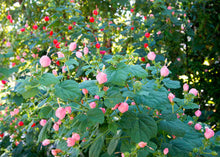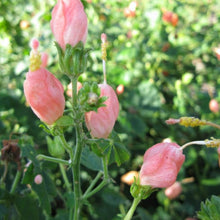Turk's Cap can play many roles in your landscape. It blooms in sun or shade from early spring to late summer and support birds, butterflies, and hummingbirds. Put it in a flowerbed or let it grow big as a bush along a wall or fence.
In the winter it loses its leaves and looks dead but comes back in the spring. Plant it next to some evergreen plants for year-round appeal.
The Turk's Cap White-Skipper butterfly is named for this plant because its caterpillars will only eat Turk's Cap leaves.
Turk's Cap is red in the wild. The "Pam's Pink" variety is a hybrid version with pink flowers that still provide nectar to pollinators.
|
Mature height |
4 – 6 feet |
|
Mature width |
4 - 5 feet |
|
Sunny or Shady |
Sunny or Shady |
|
Spring/Summer appearance |
Green leaves with red or pink flowers |
|
Fall/Winter appearance |
Drops leaves. Prune. |
|
Wildlife support |
Hummingbirds, butterflies, birds. |
|
Freeze Hardy |
Yes |
|
Botanical Name |
Malvaviscus drummondii |








